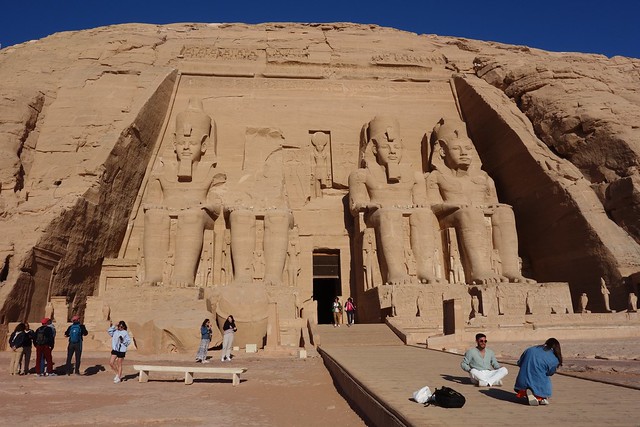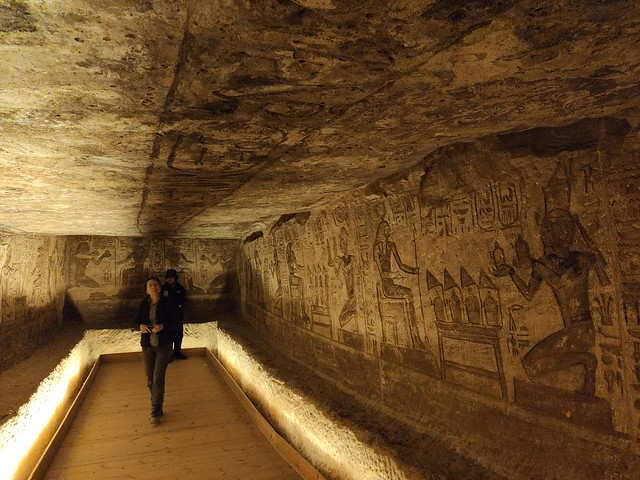Abu Simbel is a village, 20 km north of the Sudan border. While it has all the same problems of Aswan, I found it easier to overlook them with a very pleasant Lake Nasser surrounding the village. The main reason to come to Abu Simbel was to see the rock temples from the 13th century BCE. This was always the southern border of Egypt. The monuments were built right on the Nile to impress and intimidate. Three millennia later they still serve their purposes well, if only partially..
What made the place even more special was the temples were destined for inundation by the Aswan High Dam. There was an international effort to save the monuments. The whole ensemble was cut into chunks (averaging 20 tons) and reassembled on higher ground, i.e. the current location.
On the Bus from Aswan to Abu Simbel.

We arrived midday in Abu Simbel. After a brief rest at our hotel, we went out for a short stroll along Lake Nasser and were pleasantly surprised to see fishing boats in the reeds, and what looked like a Great Blue Heron in the distance.


Just before sunset we went out again.


And we continued our daily habit of eating a meal just after sundown at the same time the locals break their Ramadan fast (Iftir). Eggplant, falafel sandwiches, and fries.

We were up early the next morning and walked over to the Abu Simbel Temples. Entering at 6:10 am we were not the first visitors.

The Twin Temples were amazing, inside and out.

We entered the temple of Queen Nefertari first.



A common theme of the wall reliefs was subjugating and/or killing enemies.

And giving offerings.

And the boat from the tomb to the afterlife.

The Queen.

More tourists have arrived as we take a rest then enter the temple of Pharaoh Ramesses II.





Wall reliefs.





Entrance Hall.



One of the 4 Colossi has lost his head.


View of Lake Nasser.

View of both temples.

Panel describing the salvage effort.



4 comments:
The temples are awesome. Your efforts are well rewarded.
The temples look amazing!
Those temples were among the best I saw in Egypt, but are you sure that's a queen and not a goddess?
Kathy, Good question. My understanding, which could be wrong, is that the temple on the left was for the king and associated with a male god, and the temple on the right was for the queen and associated with a goddess. But I'm not heavy into Egyptology. -john
Post a Comment